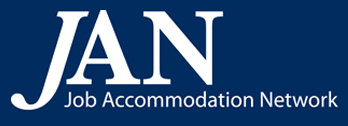On This Page
Introduction
Engaging, developing, and supporting candidates and employees is critical to optimizing the productivity of every worker. This optimization increases job satisfaction and business performance. Every candidate and employee is different—from abilities to job needs, from how they consume information to how they prefer to collaborate and communicate with others. This is particularly true of candidates and employees with disabilities who can make unique and significant contributions. However, organizations must have policies, processes, and systems in place to optimize productivity of all workers including people with disabilities.
For many organizations, the disability management process can be disjointed, reactive, and inconsistent across divisions or lines of business. This makes it difficult to enable new employees with disabilities to perform their job tasks successfully. It also creates challenges for aging employees with chronic health conditions or injured workers who are working to remain productive. The results of a poorly developed and implemented disability management process are lower retention rates, increased hiring and retraining costs, loss of highly qualified talent, and draining of essential institutional knowledge.
According to the Disability Management Employers Coalition (DMEC), over the past two decades employers have begun “integrating disability and leave management with other employee benefits and workers’ compensation programs to maximize their efforts and improve overall corporate results.” Through an integrated approach to disability management, employers “achieve cost and administrative efficiencies for the employer and better customer experience for the employee.”
This integrated approach includes a centralized intake or “triage” for the various disability functions. The process of understanding employee needs and then routing them to the subject matter experts or business consultant within a specialized disability functional area (e.g. accommodations, short term disability, long term disability, workers compensation, etc.) leads to greater efficiencies.
Situations and Solutions:
The following situations and solutions are real-life examples of accommodations that were made by JAN customers. Because accommodations are made on a case-by-case basis, these examples may not be effective for every workplace but give you an idea about the types of accommodations that are possible.
JAN Publications & Articles regarding Disability Management
Publications
Consultants' Corner Articles
- Accommodations, ADA, and Light Duty
- Affirmative Action and Disability: What Can Employers Ask?
- Making a Statement – About Reasonable Accommodation and Equal Opportunity
- Morale and Fairness Issues Related to Accommodations under the ADA
- Our Aging Workforce: A Look at the Benefits of Job Accommodation
- Reduction in Force
- Using Third-Party Vendors to Process Accommodation Requests
Articles
- Accommodations Beyond Job Performance = Compliance and Inclusion
- Best Practices in Establishing a Centralized Accommodation Fund
- Performance Management and Employees with Disabilities
- Tell 'Em About It: Educating the Workforce about the ADA & Accommodations
- The Evolution of Human Resources Management and Disability
- The Use of Sample Forms under the ADA

